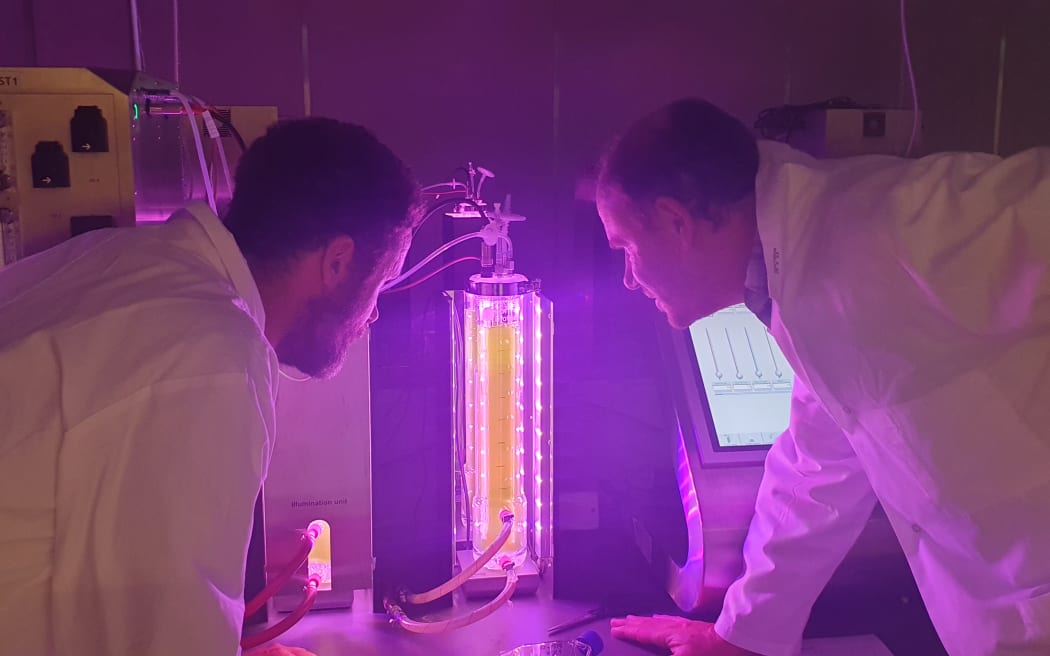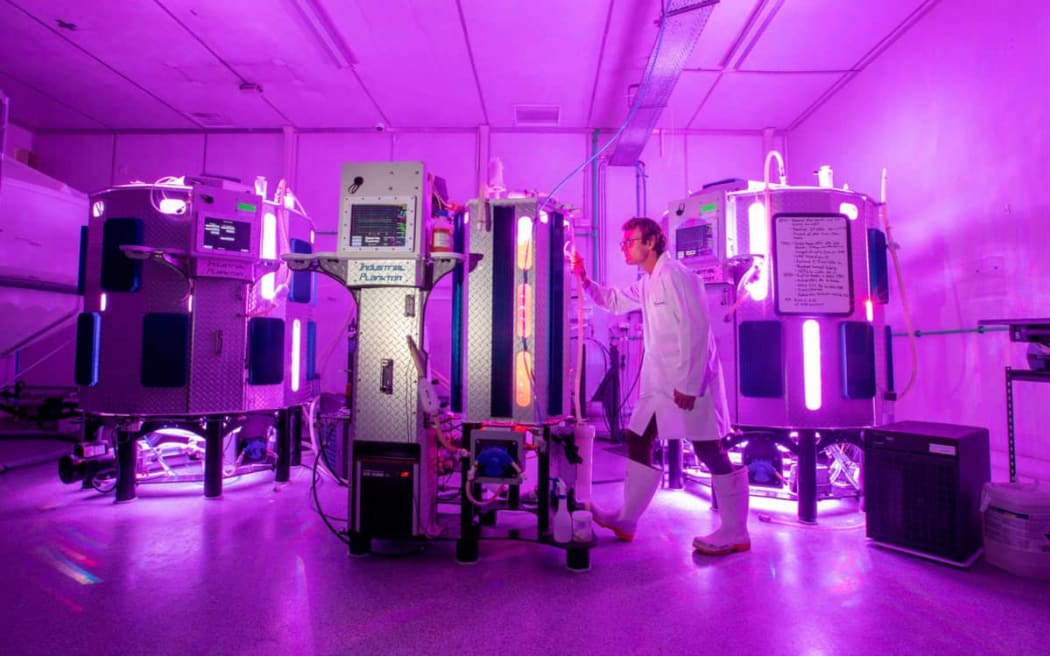Imagine a future where your burger comes with a plankton patty.
Or where you are prepped for a hospital operation with an algal anaesthetic.
If Cawthron Institute researchers have their way, this microalgae-themed future for food and pharmaceuticals could be just around the corner.

Andy Selwood and Matt Miller check on microalgae growing in a one-litre bioreactor at the Cawthron Institute. Photo: Alison Ballance
Follow Our Changing World on Apple Podcasts, Spotify, Stitcher, iHeartRADIO, Google Podcasts, RadioPublic or wherever you listen to your podcasts
The Cawthron Institute research is based on a culture collection of microalgae, also known as phytoplankton. The collection goes back more than three decades, and now contains more than 750 isolates or different strains of microalgae, collected from New Zealand, Antarctica and the Pacific. It includes marine and freshwater species.
The collection grew as the researchers realised that phytoplankton was a vast untapped resource which could potentially provide ingredients for food and pharmaceutical products.

Cawthron's microalgae research has led to the discovery of a potential new anaesthetic, neosaxitoxin. Photo: Cawthron Institute.
Developing new food and drugs
Andy Selwood and Dr Matt Miller are currently screening about a hundred of the different strains to identify which ones might produce useful bioactive compounds. They grow each strain in a series of one-litre bioreactors, exposed to slightly different combinations of light and nutrients. This allows the researchers to identify optimum growth conditions and work out which strains are producing what kinds of bioactives and in what quantities.
Listen to the full episode to hear more about caring for the 750 different living microalgae, and learn about the exciting bioactive compounds researchers have discovered.
To learn more:
-
Listen to the full episode on Our Changing World


